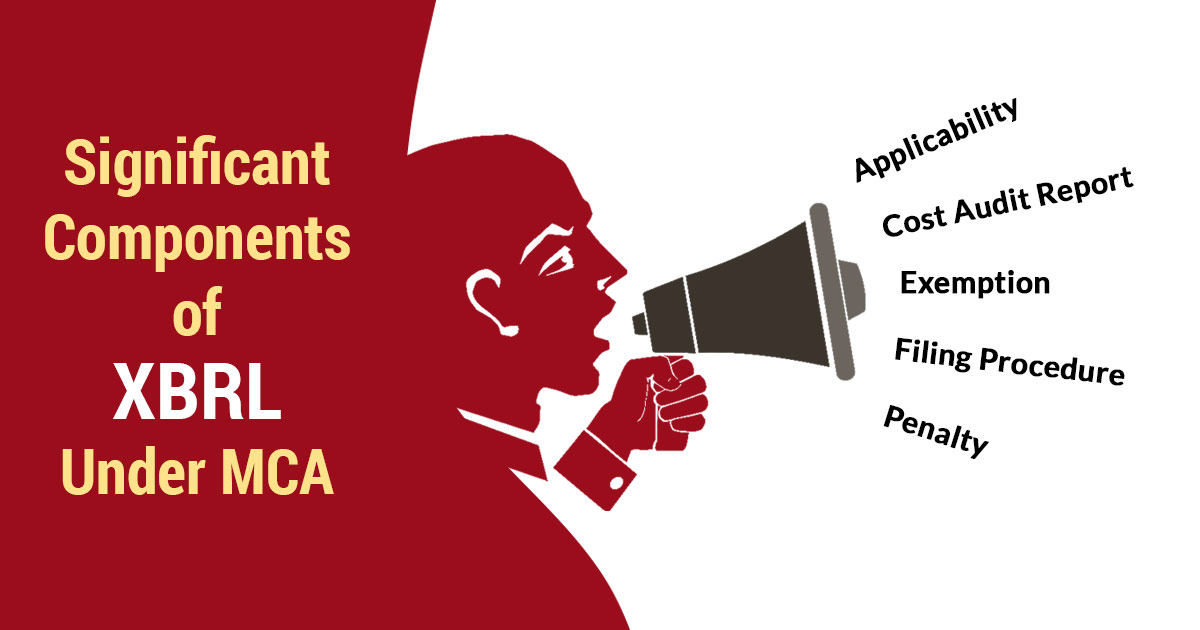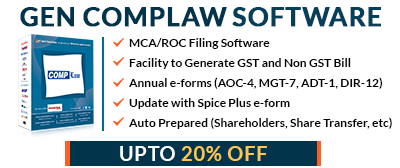
XBRL, short for eXtensible Business Reporting Language, is a significant advancement in the realm of financial reporting. It serves as a standardized language designed to streamline the exchange and analysis of business information. This article aims to delve into the complexity of XBRL, elucidating its functionalities and its pivotal role in modern accounting
practices.
MCA XBRL Applicability
The mentioned segment of the companies would furnish their financial statements and the other documents beneath section 137 of the Companies Act 2013 read with the companies (filing of documents and forms in XBRL) rules 2015 and the additional subjected laws of the Companies Act 2013 read with the rules made in it along with statutory modification(s) or re-enactment thereof for the time in force with the registrar as an attachment in e-form AOC-4 XBRL under MCA:-
- The companies that are listed with the stock exchanges in India and their Indian Subsidiaries
- The companies have a paid-up capital of 5 crore rupees or above.
- The companies having turnover of 100 cr or above.
- All companies are required to make their financial statements as per the Companies (Indian Accounting Standards) Rules, 2015.
Indeed the firms who furnished their financial statements in XBRL beneath section 137 would carry on to furnish their financial statements and the additional documents in the XBRL, even though they might stop to come beneath the category of the firms mentioned above.
The companies who made their financial statements beneath the Companies (Accounting Standards) Rules, 2006 would furnish their statements via AS “Taxonomy, and companies preparing their financial statements under Companies (Indian Accounting Standards) Rules, 2015, shall file the statements using IND-AS Taxonomy.”
CRA (Cost Audit Report) Under MCA Rules
The firm is needed to file the cost of the audit report and the additional documents to the union government beneath the sub-section (6) of section 148 of the act and the compliance made in that would furnish the report and the additional documents via the costing taxonomy for the fiscal years starting on or post to 1st April 2014 in e-form CRA-4 mentioned beneath the companies (cost records and audit) rules 2014.
XBRL Exemption Under Rules
The Non-Banking Financial Companies, Housing Finance Companies, and Companies involved in the banking or the insurance business would be privileged from the filing of the financial statements beneath these rules. The CS and lawyer can also make XBRL sheets by software without any technical error
Documents List:
- Auditor’s report in word-based formatting style
- Final Financial Statements in both PDF and word-based formatting
- “Notes forming part of Accounts in word format-Standalone”
- “Notice, Director’s Report along with all annexures in word format”
- Balance Sheet, P&L, Notes in PDF of the last year
- ADT- 1 Form with Challan
- Shareholders List Along with PAN Card
- PAN of shareholders who holds more than 5%
- PAN Card of the Company
- Last Year AOC-4 and MGT-7 Forms
- Excluding from any other information needed on the verification we would furnish the information with the help of email.
Procedure Engaged in XBRL Process
- Claim the XBRL tool from trusted vendors.
- Build the master data of the firm, directors, and auditor in the tool.
- Tag the complete Financials, Notes, Schedules, Audit Report, Directors Report, and Annual Report in the XBRL format.
- Generate the Instance Document in XML Format
- Download the validation tool from the MCA and choose the subject taxonomy.
- Upload the document on the validation tool and map and validate the documents via the same tool.
- Once the documents get validated or mapped, pre-scrutinize that through the help of the validation tool.
- Attach the pre-scrutinized instance document in Form AOC-4 XBRL and furnish to the registrar in 30 days from AGM.
Duration Under Companies Act 2013
Under the Companies Act 2013, companies are required to furnish their financial statements to the registrar within the following time limit:
- Where financial statement is adopted in duly conveyed AGM within 30 days of AGM
- Where financial statements are not adopted or the AGM has been adjourned- within 30 days of AGM and Registrar will note the financial as provisional till the financial statements are filed with him after their adoption in the adjourned annual general meeting.
- Where financial statements are adopted at adjourned AGM within thirty days of the date of such adjourned annual general meeting
- Where the AGM for any year has not been held- within thirty days of the last date before which the annual general meeting should have been held along with the statement of facts and reasons for not holding the annual general meeting
Penalty Under MCA
If you are not able to submit a copy of the financial statements to ROC in the mentioned time limit then the following penalties will be levied:
In the case of the company penalty of Rs 10,000 will be levied and in case of continuing failure penalty of Rs 100 for every day where the failure carried on to a highest of Rs 200000 will be levied..









